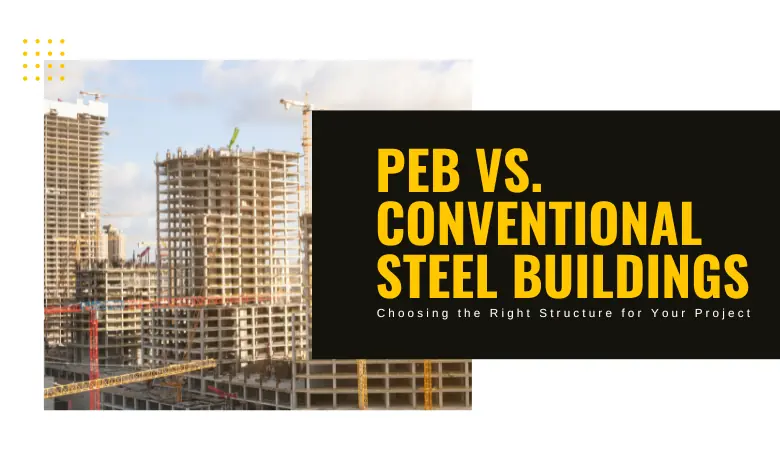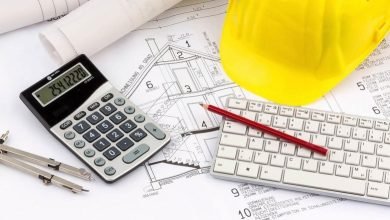PEB vs. Conventional Steel Buildings: Choosing the Right Structure for Your Project

In the realm of construction, the choice between a Pre-Engineering Building in India (PEB) and a conventional steel structure is a critical decision that significantly impacts a project’s success. This article delves into the key differences, advantages, and considerations when opting for PEB or conventional steel buildings in the context of the construction landscape in India.
Understanding Pre-Engineering Buildings (PEB):
Pre-Engineering Buildings (PEB) represent a modern and efficient approach to steel construction, especially prevalent in the rapidly growing construction industry in India. PEB is characterized by the off-site fabrication of building components that are then assembled on-site. This method streamlines the construction process, offering several advantages over conventional steel buildings.
Advantages of PEB in the Indian Context:
In the pulsating realm of construction in India, where the demand for robust and efficient structures is ever-expanding, Pre-Engineered Buildings in India (PEB) have emerged as a transformative solution. The unique advantages offered by PEB align seamlessly with the intricacies of the Indian construction landscape, presenting an innovative and pragmatic approach to building design and execution. The industry grapples with many challenges ranging from budget constraints to the need for prompt construction. However, the benefits of Pre-Engineered Buildings make it a standout choice. From economic considerations to design flexibility, PEB is carving a niche as a forward-looking construction methodology that holds immense promise for projects across the diverse spectrum of India’s built environment.
- Cost-Efficiency: PEB is renowned for its cost-effectiveness due to the efficient use of materials and reduced construction time. In India, where budget constraints often influence construction decisions, PEB stands out as an economical choice.
- Speed of Construction: PEB structures can be erected much faster than conventional buildings, accelerating project timelines. This swift construction pace aligns well with India’s dynamic construction industry, where timely project completion is crucial.
- Customization and Design Flexibility: PEB offers a high degree of customization, allowing architects and builders to design structures tailored to specific needs. This flexibility is particularly beneficial in India, where diverse construction requirements exist across regions and industries.
- Energy Efficiency: PEB designs often incorporate energy-efficient features, aligning with India’s increasing focus on sustainable and green construction practices.
Understanding Conventional Steel Buildings:
Conventional steel buildings follow a more traditional construction approach, where components are fabricated and assembled on-site. While this method has been a longstanding choice for various projects, it comes with its own set of considerations.
Advantages of Conventional Steel Buildings:
Conventional steel buildings stand out with their suitability for expansive projects, employing local labor for on-site assembly. Their adaptability to intricate designs makes them a preferred choice for complex architectural requirements. Explore the advantages of conventional steel structures for projects demanding scalability, regional engagement, and design intricacy. Top of Form
- Suitability for Large-Scale Projects: Conventional steel buildings are well-suited for large-scale projects where a more extensive on-site fabrication setup is feasible. In India, this may be relevant for mega infrastructure projects that demand a significant on-site construction presence.
- Local Labor Utilization: Conventional construction often relies on local labor for on-site assembly, contributing to the employment of skilled and unskilled workers in the region. This can be a crucial consideration in India, where labor-intensive projects are common.
- Adaptability to Complex Designs: For projects with intricate designs and unique architectural requirements, conventional steel construction allows for a high degree of adaptability. This flexibility is essential in regions of India where complex building structures are desired.
Considerations for Choosing the Right Structure in India:
- Project Scale and Complexity: For smaller to medium-sized projects with a need for quick completion, PEB may be the more suitable choice. Conventional steel buildings may be considered for larger projects where on-site fabrication is viable and complex designs are involved.
- Budget Constraints: PEB’s inherent cost-efficiency makes it an attractive option for projects with strict budget limitations. Conventional steel construction may be considered if budget constraints are less stringent and there is a need for on-site customization.
- Construction Timelines: Projects with tight timelines may benefit from the accelerated construction pace offered by PEB. Conventional steel buildings might be preferable for projects with more extended timelines that allow for on-site fabrication.
- Environmental Considerations: PEB’s focus on energy efficiency aligns well with the increasing emphasis on sustainable construction practices in India. Conventional steel buildings can still be designed with sustainability in mind, but PEB inherently offers advantages in this regard.
Conclusion:
In the diverse and rapidly evolving construction landscape of India, the choice between PEB and conventional steel buildings depends on various factors. Both methods have their merits and are suitable for different project scenarios. By carefully considering the scale, complexity, budget, and environmental considerations, project stakeholders can make an informed decision that aligns with the unique requirements of their construction project in India.





